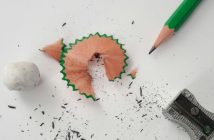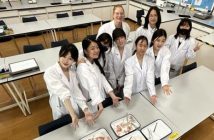
Drawn and Quartered is a monthly blog series written by Atelier Co-Founder Marianne Daquet. The series focuses on art history, and aims to foster a love of art in kids and teens through stories about artists and artworks.
David Hockney burst onto the artistic scene in 1964 at age 24 and never left. He is now considered one of the most influential British artists of the 20th century. His work consists mostly of paintings and drawings that represent the world around him in vivid colors, from friends, flowers, landscapes, and interiors to his very famous series of swimming pools.
As a young painter, he wasn’t interested in abstract paintings like his contemporaries were. Hockney has always painted realistic and everyday subjects. He never participated in any artistic movement, although some critics classify him as an important pop art contributor.
Fascinated by technology, Hockney has more recently begun to paint on an iPad (more on that below). This prolific artist also a photographer, filmmaker, and theater set designer.
For this two-part blog entry, I’ll be introducing two very interesting and experimental phases of Hockney’s oeuvre: the “joiners” and his iPad paintings.
These two stages could’ve been considered side projects, but they’re both so inventive, modern, and outside the art market that they became an integral part of his work. Now appreciated and exhibited around the world, these experiments enriched his painting work by giving it a very contemporary touch.

Part 1: The “Joiners”
By the early 80s, Hockney was already a famous painter. The director of Le Centre Georges Pompidou in Paris came to his house in California to request his photographs for an exhibition.
Hockney has always taken photographs but never thought of exhibiting them. “Photography was never really a good medium for an artist. It is too limited,” he said.
The French curator spent one week looking through hundreds of Hockney’s photo albums. The artist started experimenting with the medium. He walked across his home with a Polaroid, took series of photos, and collaged them within a large square frame.
He realized then that the concept of time and space – notions he previously considered to be missing in photography – were present. In a collage, the viewer could discover Hockney’s entire house as well as the different lights and colors in each hour of the day. He called this type of composition “joiners.”
The first “joiner” consisted of grid-like compositions made up of Polaroid photographs. Hockney then processed 35mm photographs in his lab and created collages that took on a shape of their own, creating abstract representations of the scenes he had photographed.
He assembled and stuck the photos on top of each other, but never cut or otherwise altered their form. In some of his later compositions, he even freed himself and the viewer of the constraints imposed by a square canvas or frame.
Hockney has always been interested in how we perceive and represent space and time. His compositions opened new horizons for him; he was able to deconstruct not only time and space, but also the personalities and expressions of his models (mostly friends). According to Hockney, the information collected at a glance while looking at a “joiner” is more powerful than a video depicting the same scene.
The “joiners” offer a closer reading of how we see the world: from multiple viewpoints that are then pieced together by our mind. This has clear links to Cezanne, Picasso, and Braque – the Cubists’ fractured multiple viewpoints. Hockney has always been interested in Picasso, whom he considers a master. With the “joiners,” he built a contemporary extension to the Cubist movement.

Art Activity
Ask yourself the question: “How do you see the world?”
Look around you. Do you see the scene in front of you as a neat little square with every detail visible at the same time, like a photograph or painting?
Or do you see a variety of fragmented elements? For example, if you look at a person in a room, do you see them as a whole or do your eyes flicker between different parts of the scene?
- Choose a scene from your everyday life: your mom reading, your brother playing, your family eating, or a familiar setting such as your house, backyard, school, or the street you live on.
- Like Hockney, take photographs of this scene. Don’t compose the “joiner” in your head; just focus on taking pictures. Don’t try to take beautiful photos; that’s not the point of the exercise. The idea is capture an entire scene by assembling details. If the people in your photos move, great! That introduces the element of time in your final work.
- When you’re done, print the photos in a standard 10×15 size.
- Give yourself plenty of space to spread out. Find a large piece of cardboard (about 80cm wide, and assemble the pictures on it. You can also pin them on a corkboard if that works better.
- Don’t try to compose a “nice” imagine. Think about the energy and atmosphere you tried to capture; maybe there are things you want to highlight and others that will disappear. Think about perspective: the foreground will have larger details, the background smaller details. The composition doesn’t have to be a square.
Click here to watch Hockney create a “joiner” on Youtube (VPN needed).
Marianne Daquet is the co-founder of Atelier, an art school in Sanlitun that offers classes for kids, teens, and adults. A graduate of the École des Beaux-Arts in Paris, she has exhibited in France, Beijing, and New York, and her drawings have been published in numerous international magazines. Daquet has lived in Beijing since 2006 and started Atelier with photographer Anaïs Martane after she became mother to two girls.
Photos: Shootingfilm.net



